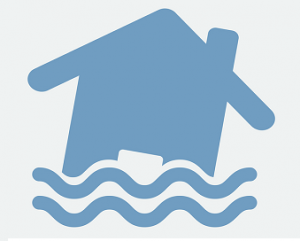Selecting a financial advisor for senior citizens/baby boomers is an important decision that requires careful consideration.
Key Questions to Ask Before Hiring a Financial Advisor
Here are some important questions to ask a financial advisor before hiring them:
- Credentials and Experience:
- What are your qualifications and certifications?
- How long have you been a financial advisor?
- Can you provide references from clients with similar financial profiles to mine?
- Services and Specialization:
- What services do you offer? (e.g., retirement planning, tax advice, estate planning)
- Do you specialize in any particular area of financial planning?
- How will you tailor your services to meet my specific needs?
- Approach to Financial Planning:
- What is your investment philosophy?
- How do you approach risk management?
- Can you explain a complex financial concept in a way that’s easy for me to understand?
- Fees and Compensation:
- How do you get paid (fee-only, commission-based, or a combination)?
- Can you provide a detailed breakdown of your fees?
- Are there any potential conflicts of interest I should be aware of?
- Communication and Reporting:
- How often will we meet to review my financial plan?
- What is your preferred method of communication?
- How do you report investment performance and what benchmarks do you use?
- Client Relationship:
- Who will I be working with in your team?
- How do you handle clients in a market downturn?
- What is your client retention rate?
- Regulatory Compliance:
- Are you a fiduciary, and what does that mean for me?
- Have you ever been subject to disciplinary action?
- How do you ensure client privacy and data security?
Step-by-step guide to help you shortlist the right financial advisor
- Identify the Needs and Goals: Determine what specific financial needs and goals the senior citizen has. This can include estate planning, retirement income planning, investment management, tax planning, etc.
- Search for Specialized Advisors: Look for advisors who specialize in working with seniors or in areas relevant to the individual’s needs such as retirement planning.
- Check Credentials and Licenses: Make sure the advisor has the necessary certifications and licenses like a Certified Financial Planner (CFP) or Chartered Financial Analyst (CFA) designation. These credentials require extensive training and adherence to a code of ethics.
- Research Experience and Track Record: Check how long the advisor has been in business and ask about their experience with senior clients. Request references from other senior clients if possible.
- Understand the Fee Structure: Advisors may charge fees in different ways, such as a percentage of assets managed, hourly rates, or fixed fees. Ensure that you understand the fee structure and that it aligns with your budget.
- Investigate Potential Conflicts of Interest: Some advisors may receive commissions from financial products they recommend. Understand how the advisor is compensated to ensure that their advice is in the best interest of the senior.
- Interview Potential Advisors: Meet with potential advisors to discuss specific needs and goals, and to gauge if their approach and personality align with the individual’s preferences. Prepare a list of questions that relate to the senior’s financial situation and the advisor’s expertise.
- Ensure They Provide Personalized Service: The advisor should be able to provide a personalized plan that fits the unique needs and goals of the senior citizen.
- Check Compliance Records: Look for any disciplinary actions or complaints against the advisor. You can typically find this information through regulatory bodies in your jurisdiction.
- Consider Technology and Accessibility: If the senior citizen is comfortable with technology, the advisor’s use of modern tools and platforms can be a plus. Ensure the advisor’s office is accessible if in-person meetings are preferred.
- Discuss Ongoing Communication: Understand how often the advisor plans to meet, provide updates, and how accessible they will be for questions or concerns.
- Get Everything in Writing: Once you’ve selected an advisor, make sure to get all agreements, fees, and services in writing.
- Involve the Senior Citizen: If you are assisting a senior citizen in this process, make sure to involve them in the decision-making, ensuring that their wishes and comfort levels are considered.
- Consider a Trial Period: If possible, consider working with the advisor on a trial basis to evaluate the relationship and the services provided.
Remember, the best financial advisor for a senior citizen will depend on individual needs, preferences, and financial situation, so take the time to carefully research and consider the best fit. It might also be wise to consult with an attorney or other professionals specializing in senior issues to ensure all legal and financial considerations are properly addressed.
Common recommendations
Recommendations can vary depending on individual circumstances, goals, and risk tolerance, but common recommendations often include:
- Income Planning: Creating a sustainable income plan that takes into account Social Security benefits, pensions, annuities, and other income sources.
- Investment Strategy: Adjusting investment portfolios to be more conservative if necessary, focusing on income-generating investments that align with the individual’s risk tolerance and financial needs.
- Health Care Planning: Reviewing options for health insurance, including Medicare, and considering long-term care insurance to protect against potential health care costs.
- Estate Planning: Establishing or reviewing wills, trusts, powers of attorney, and other estate planning documents to ensure assets are passed on according to the individual’s wishes.
- Tax Planning: Implementing strategies to minimize taxes in retirement, including considerations for required minimum distributions (RMDs) from retirement accounts.
- Debt Management: Advising on strategies to reduce or eliminate debt, especially high-interest debt, to ease financial burden.
- Housing Considerations: Providing guidance on housing options such as downsizing, reverse mortgages, or relocating to an area with lower living costs.
- Emergency Fund: Ensuring there is an adequate emergency fund in an easily accessible account to cover unexpected expenses like medical emergencies or urgent home repairs.
- Inflation Protection: Recommending investment options that can help protect against inflation, preserving the purchasing power of retirement savings.
- Social Security Optimization: Helping to determine the best time to claim Social Security benefits to maximize lifetime income based on individual circumstances.
- Philanthropic Planning: If applicable, assisting with charitable giving strategies that align with the individual’s values and financial goals.
- Staying Informed and Educated: Encouraging continuous education about personal finances, new laws, and market changes that could impact financial well-being.
- Fraud Protection: Educating and putting measures in place to protect against scams and fraud, which seniors can be particularly vulnerable to.
- Emphasizing Communication: Facilitating open communication among family members regarding financial wishes, especially as it pertains to inheritance and end-of-life care.
- Reviewing and Adjusting: Regularly reviewing and adjusting financial plans to ensure they continue to align with the senior’s needs, goals, and any changes in their personal or financial situation.
- Considerations for Cognitive Decline: Putting plans in place to manage finances in case of cognitive decline, including trusts or powers of attorney.
The exact recommendations will depend on the individual’s situation, including their health, family situation, financial position, and personal preferences. Therefore, it’s vital to work with a financial advisor who takes the time to understand these unique factors and provides personalized advice.


